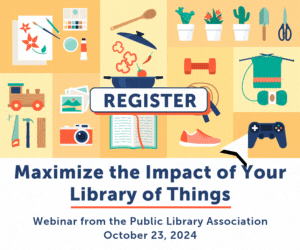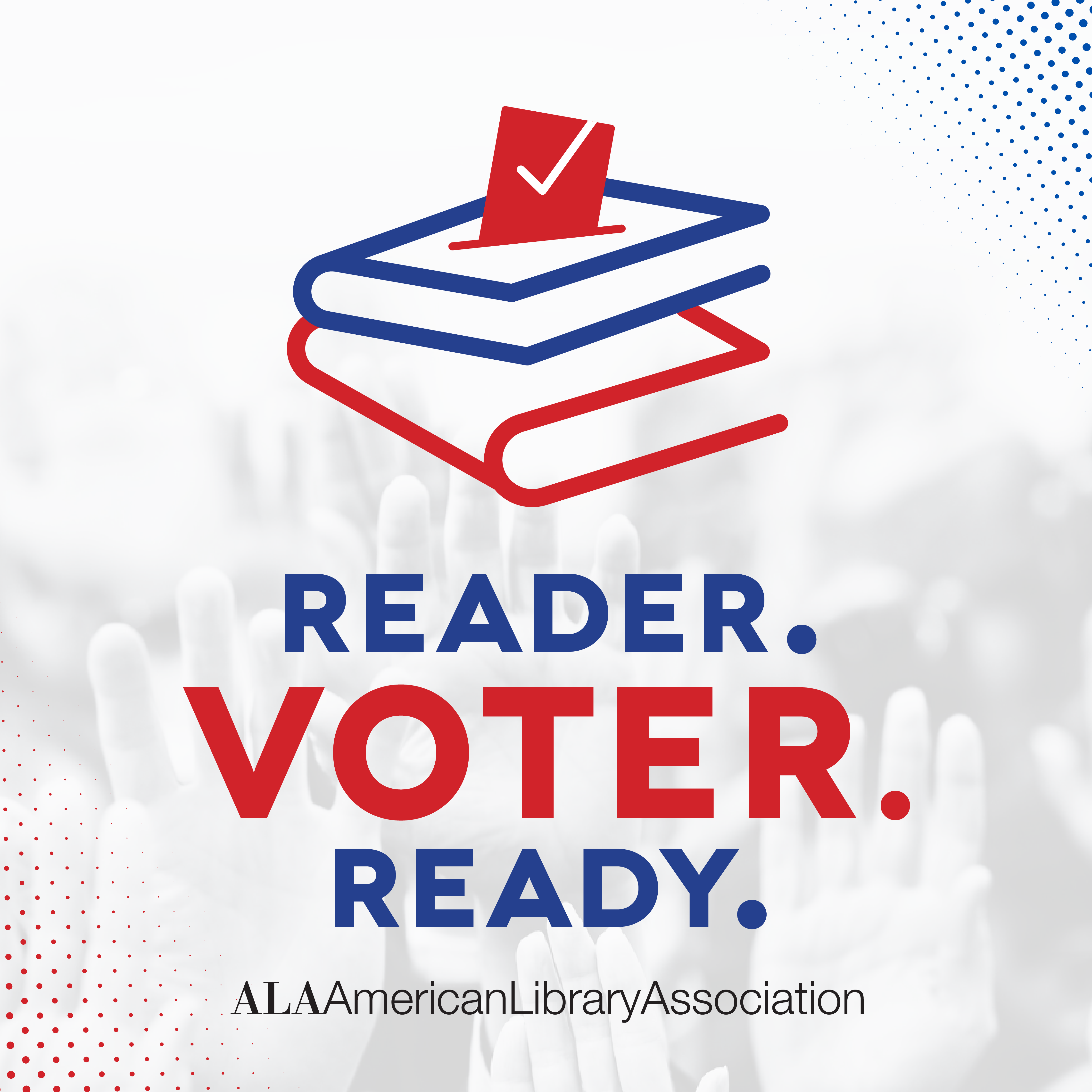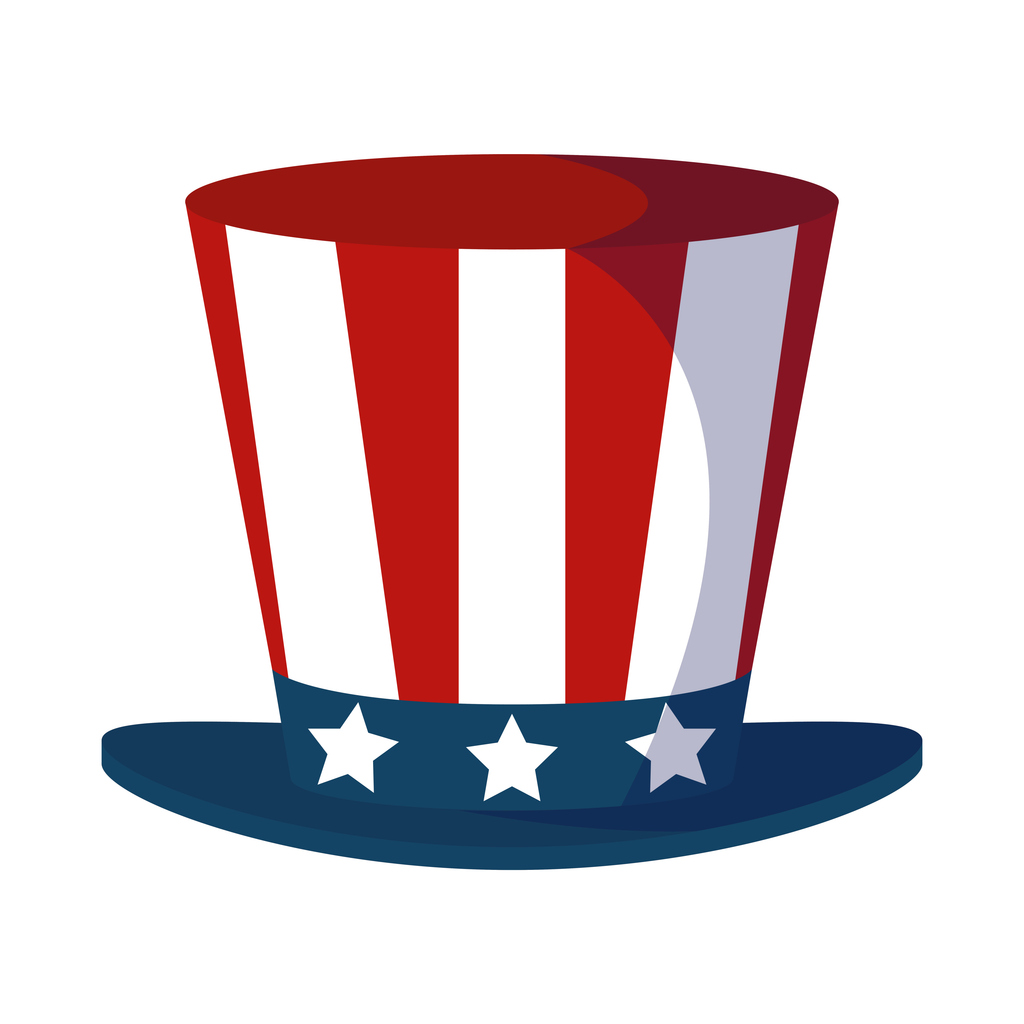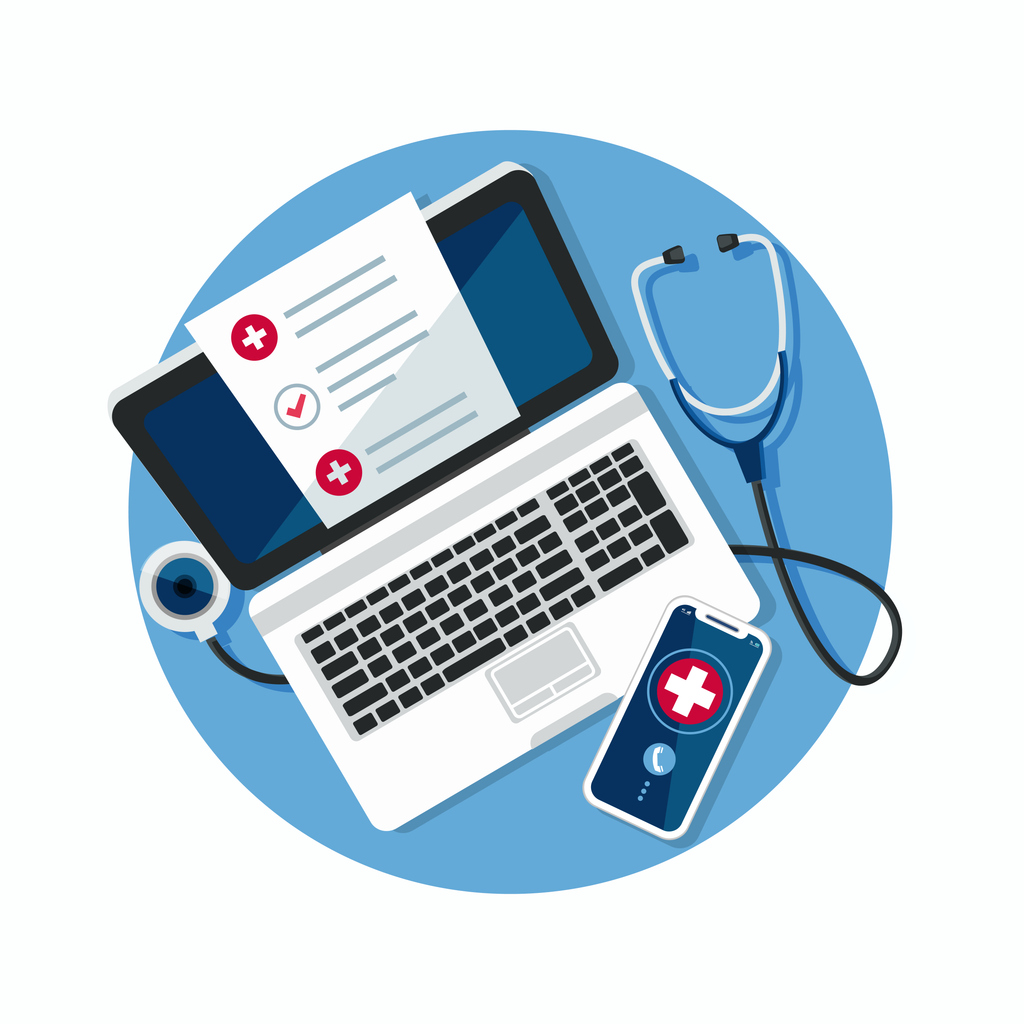Why Make? An Exploration of User-Perceived Benefits of Makerspaces
ELIZABETH J. HARTNETT is a PhD candidate at the School of Library and Information Science at the University of South Carolina in Columbia. Contact Elizabeth at Ljh79@aol.com. Elizabeth is currently reading Let’s Explore Diabetes with Owls by David Sedaris and The Sage Handbook of Qualitative Research, 4th Edition, N.K. Denzin and Y.S. Lincoln, editors.
During the last decade, technology has provided us with tremendous individual power, and this has encouraged the development of what is being called the Maker Movement. This movement is having a profound effect upon the manufacturing sector as well as the individual’s ability to explore and share creative ideas using computer-aided design and an online network of collaborators. In response to interest in participating in self-directed projects that utilize digital tools and knowledge, libraries and other community-based organizations have created makerspaces. These facilities provide users with the physical tools and space to pursue their interests and collaborate on projects. Educational research shows that this type of activity can facilitate learning, but little is known about what the users themselves perceive to be the benefits of access to makerspaces. This exploratory study examines users’ perceptions of their experience in public library makerspaces.
In order to determine the usefulness of makerspaces in their current form, it is necessary to understand the reasons people participate in “making” and the benefits they feel come from this activity. The growing popularity of makerspaces in recent years, and of the so-called Maker Movement as a whole, indicates that these facilities meet a need or address an interest shared by a large number of people. To explore the reasons that people use makerspaces, and what impact that use has on their lives, the following questions should be considered:
- What motivates people to use makerspaces?
- In the opinion of users, what specific skills or attitudes are fostered through use of a makerspace?
- How do makerspace activities affect the lives of users?
Gathering to collaborate on shared interests may have personal benefits and also encourage the development of new skills and attitudes. Intuitively, it makes sense that the interactive and social nature of making encourages active learning, and educators find active and collaborative learning to be an effective way to develop skills in experimentation and problem-solving.1
Significance and Rise of the Maker Movement
A look at the developments that led to the creation of makerspaces can help us to understand just what goes on in makerspaces. These developments have really just occurred over the last decade, and were set in motion by the tremendous individual power provided by technology. Digital tools give people the ability to adapt ideas and designs quickly and easily. With minimal investment
of time or money, ideas can be tried out and then discarded or tweaked for optimal results. Although “makers” (under the names
“inventor” and “tinkerer”) have existed for as long as there have been people, they have a new ability, through the use of digital
tools and the Internet, to share and combine ideas as never before. Instant communication, unimpeded by distance or even language barriers, allows like-minded individuals to collaborate on projects, improving the outcome and drastically reducing the time required to refine ideas. Experts in many fields make their designs and ideas freely available, open to being adapted and improved by an online community of makers.2 Freely shared information is a hallmark of the Maker Movement, which advocates open access to software and adheres to the notion that any idea can be improved through collaboration. Altering existing designs to suit the user produces satisfying customized results, while collaboration adds new richness to ideas.
Interest in making has spread rapidly since 2006, when the first Maker Faire was held in San Mateo, California. Maker Faires are gatherings, often held annually, at which makers can display their projects, interact, and share ideas. Maker Faires have spread all over the world, with dozens now held each year. South America’s first Maker Faire was held in 2013 in Santiago, Chile, and Tokyo’s second annual Maker Faire was also held in that year.3 In June 2014, the White House hosted its first ever Maker Faire.
Maker Faires increased interest and enthusiasm for making, and as a result there arose a demand for spaces where makers could gather to work together on projects, using equipment that they were not likely to have in their homes. Depending on the requirements of a given project, makers might want access to 3-D scanners and printers, digital routers, laser cutters, welding and soldering equipment, or other specialized tools.
As important as the availability of tools is the need for a physical space in which to gather and collaborate. To meet this need, entrepreneurs established commercial makerspaces that give users access to a wide variety of tools, along with instruction in their use, in exchange for a monthly fee. TechShop is one example of such a space. The first TechShop opened in 2006 and there are now several locations in major US cities. In addition to giving people a place to work on leisure-time interests, workspaces like these have been instrumental in the development of new product ideas and small business ventures. The idea of makerspaces as incubators is an important facet of their story.
As interest in making continued to grow, public facilities moved to provide their users with access to digital tools and making activities. The first makerspace in a public library was established at the Fayetteville Free Library in upstate New York in 2011, and since then dozens of makerspaces have been established in libraries, museums, and schools.4 The equipment and services provided at these facilities vary greatly, and depend upon available funding, space, and the needs and interests of users. This, combined with the relatively short time that they’ve existed in their current form, makes it difficult to precisely define makerspaces. However, some common elements can be found:
- Physical space.
- Access to equipment and instruction.
- Responsive to user interests and skill levels.
- Opportunities for collaboration.
- Self-directed work.
Based on these common elements, a satisfactory definition for makerspaces might be as follows: A makerspace is a physical space that provides access to equipment and guidance in a flexible format that responds to the interests and skill levels of users collaborating on self-directed projects.
The connection between makerspaces and public libraries or other cultural institutions may be puzzling to some initially, but their inclusion supports the overall goals of these institutions: equity of access, community development, creating relationships among patrons, and encouraging lifelong learning. These are all potential benefits of public access to makerspaces as well.5
Evidence of the beneficial effects of makerspaces is beginning to be documented. In a 2013 report, high-school-age users of YOUmedia at the Chicago Public Library listed these effects:
- Feeling of safety, community, and belonging.
- Greater involvement with chosen interests.
- Improvement in at least one digital media skill.
- Improved academic, communication, and writing skills.
- Better understanding of opportunities after high school.6
The Chicago report relates makerspaces to the Connected Learning Model, which is further described by the authors of Connected Learning: An Agenda for Research and Design:
Connected learning is realized when a young person is able to pursue a personal interest or passion with the support of friends and caring adults, and is in turn able to link this learning and interest to academic achievement, career success or civic engagement. This model is based on evidence that the most resilient, adaptive, and effective learning involves individual interest as well as social support to overcome adversity and provide recognition.7
The role of makerspaces in education has yet to be fully established, but we do know that the type of active learning that can take place in a makerspace has many benefits. Collaboration and experimentation are powerful learning activities, and they can result in a higher level of engagement and more sustained interest.8 Active learning has been the subject of many decades of research in education.
Benefits of Active Learning
We know that learning has both individual and social components, and each is essential. Engagement and exploration should be followed by reflection and application. For decades, educational studies have shown the importance of the opportunity to learn through interaction.
Considerable work has been done in determining how active learning affects student outcomes. In his 2004 survey of the literature on this topic, Michael Prince discusses the various attributes of what may be called active, collaborative, cooperative, or problem-based learning. Although their focus may vary slightly, these terms are often used interchangeably and they all require student engagement, interaction, and some degree of self-direction. Prince finds “extensive empirical support for active learning,” including these major points:
- Academic achievement is enhanced when students work together in small groups.
- Cooperation promotes higher quality individual problem solving than does competition.
- Active learning leads to better student attitudes and improvements in students’ thinking and writing.
- Cooperation improves learning outcomes relative to individual work across the board.
- Cooperation also promotes interpersonal relationships, improves social support, and fosters self-esteem.9
More recently, David W. Johnson and Roger T. Johnson have examined the effects of cooperative learning activities on individuals in terms of achievement as well as individual behavior. They found that achievement was higher in “cooperating individuals.” Additionally, they found that “cooperative experiences promote more frequent insight into and use of higher level cognitive and moral reasoning strategies than do competitive (effect size = 0.93) or individualistic (effect size = 0.97) efforts.” The cooperators also spent more time on task and tended to have better outcomes in terms of these measures:
- long-term retention;
- intrinsic motivation and expectations for success;
- creative thinking (i.e., process gain);
- transfer of learning;
- positive attitudes toward the task and school.10
Relating cooperative learning to Social Interdependence Theory illuminates its social and behavioral benefits. Cooperative learning creates positive interdependence, which has favorable effects on motivation, and “facilitates the development of new insights and discoveries and the more frequent use of higher level reasoning strategies.”11 Johnson and Johnson cite extensive research showing that positive interdependence also influences social development and behavior among collaborators: it’s characterized by individuals acting in trusting and trustworthy ways, exchanging needed resources and information more effectively, assisting and encouraging other group members, striving for mutual benefit, having low levels of anxiety and stress, and being better able to explore others’ points of view.12
Research into the benefits of self-directed, collaborative learning indicates that this sort of work contributes to the development of strong problem-solving skills. In a series of studies, researcher Sugata Mitra tested the ability of children to learn to use computers and the Internet collaboratively, without intervention or instruction. The learning generated by this peer interaction, despite the children having no previous access to technology or schooling, was significant, and suggested that self-directed learning in a group of peers is often the most effective approach for acquiring new skills.13
Further studies conducted by Mitra’s colleagues confirmed that “young children learn most effectively when they are engaged in interaction, rather than in merely receptive or passive activities.”14
In an extensive study of thousands of college students, Alexander Astin found that interaction with peers was shown to have a positive effect on such student attributes as knowledge of a field, analytical and problem-solving skills, critical thinking skills, interpersonal skills, and overall academic development.15
Potential Contributions
There can be little doubt that collaborative activity can be an effective way to learn new skills. This, along with the social benefits implied by the popularity of making, creates a strong argument for the value of providing makerspaces. Participation in making can enhance people’s lives socially as well as intellectually, so its value to individuals is clear. Value to society as a whole can also be seen when we consider the increased demand in many emerging occupations for just those skills that collaborative, self-directed learning can produce.
Technology has become a part of nearly every modern occupation and related skills are essential for success, particularly in the so-called STEM fields—those related to science, technology, engineering, and math. These occupations represent much of the work that helps to improve society as a whole, and are the source of innovations in medicine, manufacturing, transportation, and many other critical areas. Jobs in these areas are among the fastest growing and best paid of all occupations. The Bureau of Labor Statistics reported in 2010 that STEM jobs increased at more than twice the rate of non-STEM jobs in the previous decade, and projected that their growth would accelerate in the coming years. The same report shows that the average earnings for STEM workers exceed those of workers in other areas with the same level of education.16 The skills that best prepare people for these types of jobs mirror those mentioned in the discussion of active learning outcomes above.
The Accrediting Board for Engineering and Technology lists many of these skills in its criteria for effective engineering programs:
- ability to design and conduct experiments, as well as to analyze and interpret data;
- ability to design a system, component, or process to meet desired needs within realistic constraints such as economic, environmental, social, political, ethical, health and safety, manufacturability, and sustainability;
- ability to function on multidisciplinary teams;
- ability to communicate effectively;
- ability to use the techniques, skills, and modern engineering tools necessary for engineering practice.17
The potential for makerspaces to foster positive attitudes toward lifelong learning, interpersonal and collaborative skills, and vigorous problem-solving skills suggests that they can help fill the skill gap currently seen in the STEM fields. In response to the need for workers in these critical fields, the US Defense Advanced Research Projects Agency (DARPA) is providing a total of ten million dollars in grants to projects designed to establish makerspaces in one thousand high schools by 2016.18
A Closer Look
With their potential for enhancing learning as well as improving communication and collaborative skills in users, makerspaces merit the attention they receive, and the enthusiasm of their proponents is understandable. As their use becomes more widespread, it is worthwhile to examine how well makerspaces are measuring up to expectations. This study sought to determine the benefits of makerspaces, as perceived by their users. It involved conducting a focus group at an urban public library makerspace recognized for its innovative approach; the 4th Floor at the Chattanooga (TN) Public Library. This site was selected because it includes a dedicated space and extensive array of equipment, is staffed, and has been in operation for more than one year. The makerspace is known as the 4th Floor, and its vision, as stated on its website, reflects the priorities and unique advantages of the space:
The 4th Floor is a public laboratory and educational facility with a focus on information, design, technology, and the applied arts. The 12,000+ sq. foot space hosts equipment, expertise, programs, events, and meetings within this scope. While traditional library spaces support the consumption of knowledge by offering access to media, the 4th Floor is unique because it supports the production, connection, and sharing of knowledge by offering access to tools and instruction.19
User opinions were gathered through a focus group discussion held at the makerspace. To recruit participants, library staff members were asked to inform their users of the upcoming meeting and create a list of those interested in participating. An anticipated minimum of five participants was not met, so the focus group consisted of four participants. Two staff members at the location were also interviewed. This yielded useful information about the 4th Floor, including when it was started, what equipment is available, and how it is staffed.
The discussions were recorded, and eight core questions related to the participants’ usage of the makerspace and what specific benefits they derive were discussed in the focus group. Transcripts of focus group discussions were reviewed and coded to uncover themes and similarities among responses. The following sections include quotes from interview and focus group participants.
Findings
Staff
Staff interviews provided background information on the 4th Floor, as well as insight into operations and services. Interviews were conducted with the library’s associate director and its project manager, both of whom are deeply involved in developing the 4th Floor.
Their discussions primarily focused on three areas: (1) community engagement, (2) experimentation, and (3) flexibility.
Community Engagement
Much of the associate director’s work related to the 4th Floor is concerned with forging relationships with community groups and making the facility a well-known asset in the community. The space can be called a “Civic Laboratory,” because of its public availability. The library’s associate director mentioned two current collaborative projects, both associated with the fact that the city has one-gigabit Internet, which opens up a whole new world of functionality and applications—he calls it a “next generation network.” The first project is funded through a grant from Mozilla and the National Science Foundation to establish a Gig Lab for exploring these possibilities. An area of the 4th Floor is being refitted to accommodate the lab and equipment is beginning to be purchased.
In partnership with a local startup called CoLab (Company Lab), the 4th Floor is organizing a “Gig Tank” group, which will collaborate and explore the use of such a powerful (unlimited) high-speed tool.
Experimentation
The 4th Floor is an experimental space, and there is an element of trial and error in the library’s practices. The staff is building policies as they go, and often amend and improve them over time. One example involves the procedure for determining the fee for 3-D printing. Access to the equipment is free, but the library asks users to pay the cost of materials. The staff started out allowing open access and free use of their 3-D printers; this gradually evolved into a system in which users are asked to reserve a printer in advance and pay a small fee for the consumables. For 3-D printing, the user is charged by the gram of material used. The 4th Floor developed a method for determining the cost of a given project automatically, based on information in the design file, and this method is now being used throughout the city’s library system.
The 4th Floor often serves as a beta space for the rest of the library branch and system. One example of this is the design and setup of a recording booth for the library’s teen floor, which was completed and debugged by the 4th Floor staff.
Flexibility
The 4th Floor staff members value flexibility, since it allows them to be responsive to user needs and interest and also to capitalize on partnership opportunities. Because many of the ongoing projects at the 4th Floor do involve grants and partnerships, the staff must consider varying levels of funding in any long-term plans. They strive to align these plans as much as possible with the interests of their users, and provide programming and instruction in those areas as well. It is often the case that a patron will have more experience in a given area than any staff member, and workshops and projects led by users themselves are common.
A third staff member, working part time and exclusively on the 4th Floor, spoke from his perspective as both a staff member and a user of the space. He stressed the benefits to the community and the opportunities to learn from other users on the 4th Floor. He described some of the users that frequent the space, and what they do there:
One person is working on a violin, using 3-D printing and laser cutter.
- An engineer designed and printed a part for an eighteen-wheeler that he sells to truck drivers.
- A father made pieces for his child’s train set.
- A woman printed personalized Legos as a gift for her husband.
- An art student uses the laser cutter for school projects.
- High school students work on senior projects here.
- Ezra Reynolds created a prosthetic hand for his son.
This staff member also commented on the following topics:
- Noise Issues: The staff usually doesn’t have to deal with this. The rules for who can use the space are very minimal and flexible. Generally, if anyone is being disruptive, the other users talk to them. The space is self-policing in that sense.
- Programming: Staff, community experts, or users run the 4th Floor programs. Content of the sessions is tailored to attendees. Types of programming and events:
- Hackanooga (in cooperation with NSF, Code for America, Open Chattanooga, and other groups).
- Arduino Nights.
- 3-D printing intro.
- Community Pi (Python coding class).
- Digital Map-Making.
- Bitcoins Meetup Group (formed by users).
Focus Group Discussion
Four 4th Floor users participated in a focus group discussion, sharing their impressions and experiences in using a makerspace. The most common themes derived are listed in figure 1.
Social interactions are a big part of what draws these users to the 4th Floor. One user compared the space to a garage: “This is the big collective garage—like this is where projects happen, it’s the physical space, it’s got the tools and it also has —you know—your neighbor sticking his head um, over the fence and giving you advice. . . and finding out what’s going on.”
The exchange of ideas that takes place among users was an important feature for the participants: “Honestly, I think that’s where the makerspace in the library makes the most sense—it’s the sharing of knowledge. It’s the. . . you know, yeah, there is an expectation. You come up here and you work, and somebody walks up and asks you what you’re doing, . . . that’s the price you pay (to use the space), that’s exactly what it is.”
This interaction among people with widely varying backgrounds and experience provide a “much . . .wider perspective on this idea of what—I don’t know—making something or even technology is.”
The 4th Floor brings together people with interest and people with expertise. Focus group participants expressed appreciation for the fact that people could apply skills to help other users. The Arduino Nights program was first facilitated by staff, but was eventually taken over by high school students who had come to work on senior projects (building robots): “So then they started hanging around for Arduino Night, which turned into them doing stuff on Arduino Night, which turned into them teaching Arduino Night. And I think that’s—I don’t know, that to me is a really cool thing that can happen in a place like that.”
Users value the opportunity to pursue and share their interests at the 4th Floor. Working alongside people engaged in a variety of activities also leads them to expand their interests and try new things:
“The staff kind of supplements a lot of the things that happen up here, and not necessarily runs them.”
“I’ve had the background of having access not to definitely as much—not to 3-D printers, which weren’t around, definitely laser cutters—that’s awesome, but soldering irons, that sort of thing, growing up, but then kind of rediscovering that and being able to come explore those things with others and share what I’ve learned over the years with others [has been very interesting].”
Sharing expertise and the access to the knowledge of other users and community experts is a benefit of the 4th Floor, according to the focus group.
The idea of community came up frequently in the discussion. The users see the 4th Floor as a point of community pride and an indicator of an innovative spirit in the city:
“The library having a makerspace is a good indicator of the culture that we see that makes some of our economic development initiatives work, actually. So, that collaborative learning . . . our community’s kind of permeated with the spirit of collaboration, I think.”
The respondents mentioned that people from out of town frequently come to see the 4th Floor, and a wide variety of community groups make use of the space. This leads into the idea of providing access:
“Something like this happening in [our city]—that community service aspect of it. This is . . . that we can give public access to some of these incredible things . . . that you can come and learn without having to belong to a paid makerspace or be in school or . . . you know it is just an equity of access kind of thing.”
Access to space for creative work is valued, as users pursue projects related to a small business, create prototypes, and experiment with new equipment. Often, the 4th Floor is where they have their first encounter with this technology.
“That was definitely the first time I’d ever seen a 3-D printer work, or a. . . laser cutter, so having access to technology I’ve never even thought about before was just mind-blowing to me. . . . But it was just amazing to me that we could have this here, you know? And that it was possible.”
Implications
The results of this exploratory study may lead to a better understanding of the actual benefits users receive from their experience in makerspaces. With this information, libraries and other institutions can design their makerspaces and plan programming that maximizes these benefits. This will help make the most of limited budgets.
Proof that users derive life-enhancing benefits from access to makerspaces will be a powerful tool for attracting funding, both from public and industry sources. Helping people to develop their potential in problem-solving and improve their ability to work collaboratively has potential benefits for many stakeholders, as is evidenced by the emphasis being placed on these efforts through various government and education initiatives.
The focus group discussion brought to light the fact that the presence of a free, publicly accessible makerspace reflects upon the overall community’s attitude toward innovation. This public library makerspace serves as a resource to local entrepreneurs as well as a partner in large-scale projects, like the Gig Lab. It provides a place for people with ideas to make contact, and helps to create a community environment that attracts them.
Other benefits perceived by users at the 4th Floor include many of those associated with active and collaborative learning. As Generation Z comes of age, providing opportunities for collaborative work should be an educational priority. This information on the potential role of library makerspaces may be useful in developing facilities that not only contribute to social and personal growth but also serve as centers for the development of critical thinkers who are empowered to make full use of the digital tools at hand today and the many others that are just over the horizon.
References
- David W. Johnson and Roger T. Johnson, “An Educational Psychology Success Story: Social Interdependence Theory and Cooperative Learning,” Educational Researcher 38, no. 5 (June 2009): 367, doi:10.3102/0013189X09339057.
- Chris Anderson, Makers: The New Industrial Revolution (New York: Random House, 2012).
- Sabrina Merlo, “The Year of 100 Maker Faires,” Makezine, Jan. 1, 2014.
- Sarah Hashemi Scott, “Making the Case for a Public Library Makerspace,” Public Libraries Online, Nov. 11, 2012.
- Ibid.
- Penny Bender Sebring et al., Teens, Digital Media, and the Chicago Public Library (Chicago: University of Chicago Consortium on School Research, 2013): 35–39.
- Mizuko Ito et al., Connected Learning: An Agenda for Research and Design (Irvine, CA: Digital Media and Learning Research
Hub, 2013): 4. - Michael Prince, “Does Active Learning Work? A Review of the Research,” Journal 1. of Engineering Education 93, no. 3 (2004): 224, doi:10.1002/j.2168-9830.2004.tb00809.x.
- Ibid., 223–231.
- Johnson and Johnson, “An Educational Psychology Success Story:” 371.
- Ibid., 368.
- Ibid., 368–369.
- Sugata Mitra and Ritu Dangwal, “Limits to Self-Organising Systems of Learning: The Kalikuppam Experiment,” British Journal of Educational Technology 41, no. 5 (Sept. 2010): 672–688, doi:10.1111/j.1467-8535.2010.01077.x
- Ritu Dangwal and Preeti Kapur, “Learning through Teaching: Peer-Mediated Instruction in Minimally Invasive Education,” British Journal of Educational Technology 40, no. 1 (Jan. 2009): 19, doi:10.1111/j.1467-8535.2008.00863.x.
- Alexander Astin, What Matters in College? Four Critical Years Revisited (San Francisco,: Jossey-Bass, 1993).
- David Langdon et al., STEM: Good Jobs Now and for the Future, Economics and Statistics Administration Issue Brief #03-
11 (Washington, DC: U.S .Department of Commerce, 2011). - “Criteria for Accrediting Engineering Programs,” (Baltimore: Accrediting Board for Engineering and Technology, 2012): 2.
- Dale Dougherty, “DARPA Mentor Award to Bring Making to Education,” Makezine, Jan. 19, 2012.
- “4th Floor,” Chattanooga Public Library, accessed Nov. 4, 2015.
Tags: adult learning, community engagement, community engagement in libraries, library makerspace, makerfaire, makerspaces









